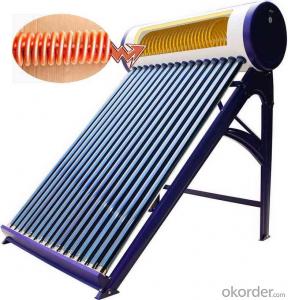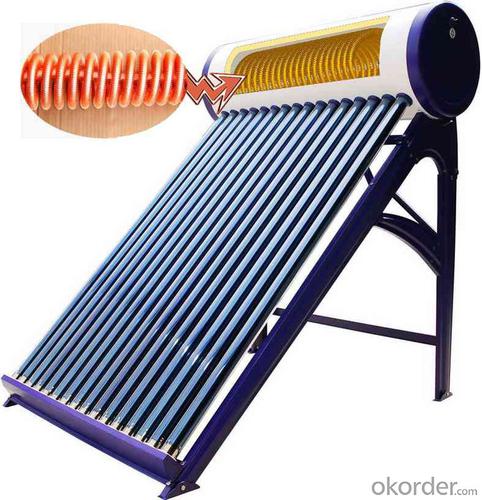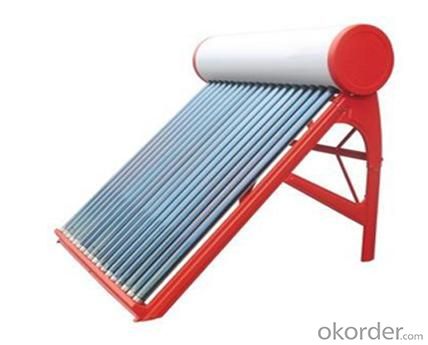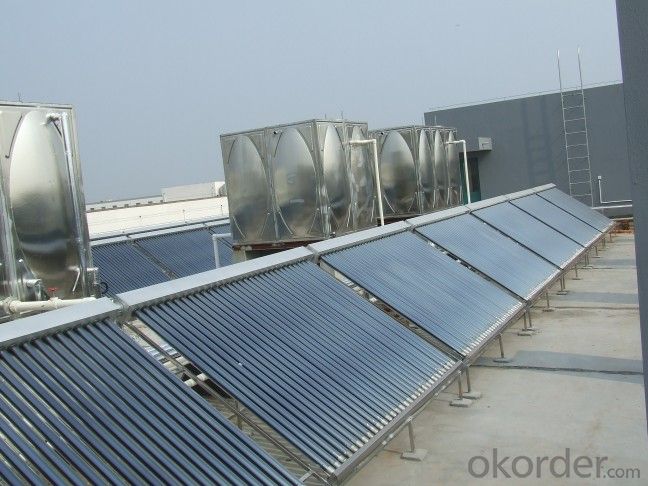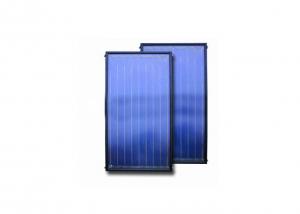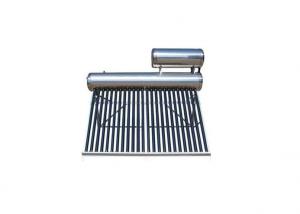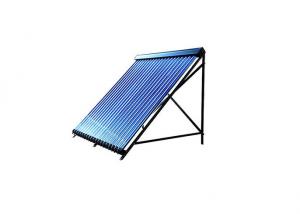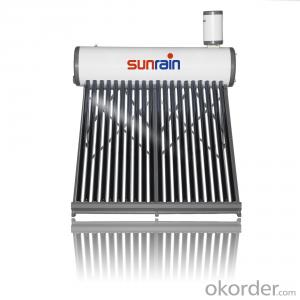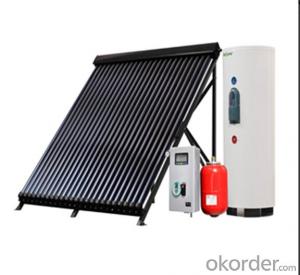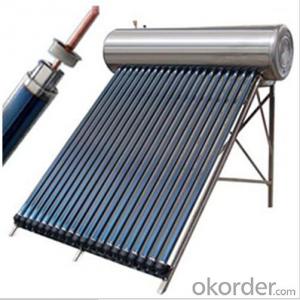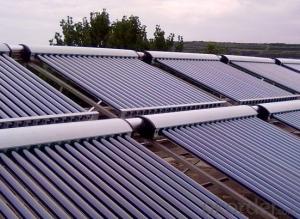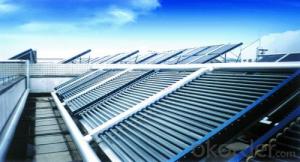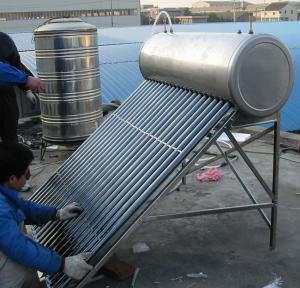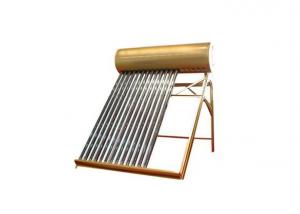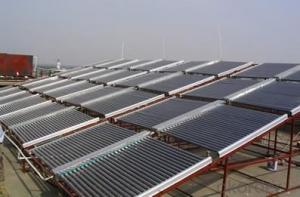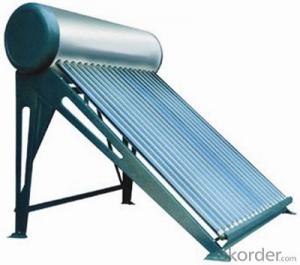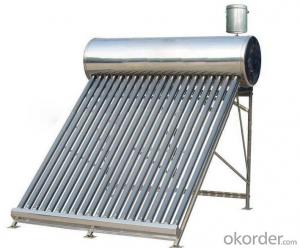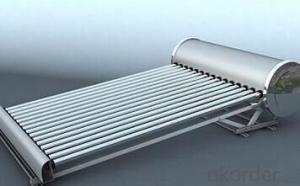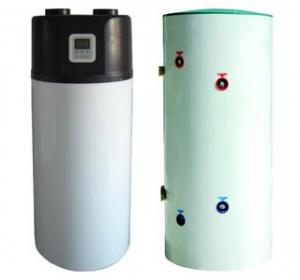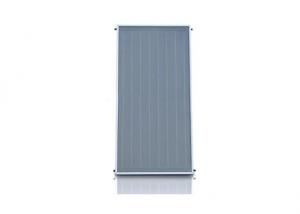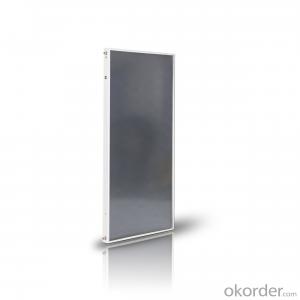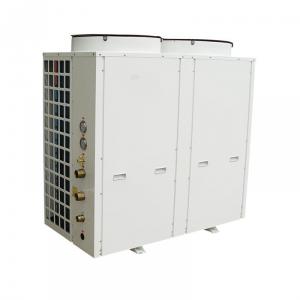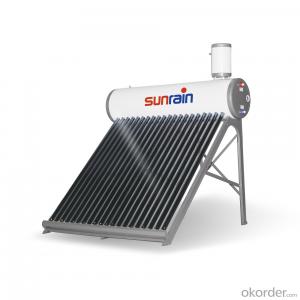Htp Solar Water Heater - Stainless Steel Solar Water Heaters Cheap Price
- Loading Port:
- China main port
- Payment Terms:
- TT OR LC
- Min Order Qty:
- 10 set
- Supply Capability:
- 1000 set/month
OKorder Service Pledge
OKorder Financial Service
You Might Also Like
Working Principle of Domestic Solar Water Heaters:
Solar energy, in essence, is an electromagnetic wave, a type of strong optical radiation, which is produced by thermonuclear fusion reaction. The energy of the solar radiation is transmitted through the liught of different wave length. The solar water heater is designed to mainly take in the energy of visible light & near ultra red light through the selective absorbing coating of vacuum tubes.When the water in the solar collector is heated by the solar radiation, its temperature rises. As a result, the water in the solar collector and the water in the tank form natural convection because of density contrast casued by the temperature difference. So the water of the higher temperature is incessantly forced into the insulated solar water tank( As shown in the figure).
Features
<1> Imported SUS304-2B food-level stainless steel,thickness:0.31~0.5mm
<2> Outer tank: High quality stainless steel,thickness:0.31~0.5mm
<3>Insulation: 50~55mm polyurethane foam
<4> Vacuum tube: CU/SS-AL/N red tube
<5> Frame: Stainless steel/Aluminum alloy,thickness:1.2~2mm
<6> Reflector: Stainless steel/Aluminum alloy as option
<7> Available accessories: Feeding tank,solar controller,electric heater, Mag rod,thermostatic mixing valve
Specification
ITEM.NO | SPECIFICATION | EFFECTIVE LIGHT AREA | TANK'S CAPACITY | APPLICATION PEOPLE | CBM | |||
DIAMETER OF WATER TANK | QTY OF TUBE(pcs) | DIAMETER OF TUBE | LENGTH OF TUBE | |||||
Z-NS5810 | 460mm | 10 | 58mm | 1.8m | 1.04 | 100L | 4 | 0.37 |
Z-NS5812 | 460mm | 12 | 58mm | 1.8m | 1.25 | 120L | 4-5 | 0.44 |
Z-NS5815 | 460mm | 15 | 58mm | 1.8m | 1.56 | 150L | 6 | 0.56 |
Z-NS5818 | 460mm | 18 | 58mm | 1.8m | 1.87 | 180L | 7-8 | 0.64 |
Z-NS5820 | 460mm | 20 | 58mm | 1.8m | 2.08 | 200L | 8 | 0.7 |
Z-NS5825 | 460mm | 25 | 58mm | 1.8m | 2.61 | 250L | 10 | 0.89 |
Z-NS5830 | 460mm | 30 | 58mm | 1.8m | 3.13 | 300L | 12 | 1 |
Z-NS5836 | 460mm | 36 | 58mm | 1.8m | 3.75 | 360L | 14-15 | 1.3 |
Z-NS5840 | 460mm | 40 | 58mm | 1.8m | 4.17 | 400L | 16 | 1.4 |
Z-NS5845 | 460mm | 45 | 58mm | 1.8m | 4.69 | 450L | 18 | 1.6 |
Product Details Show
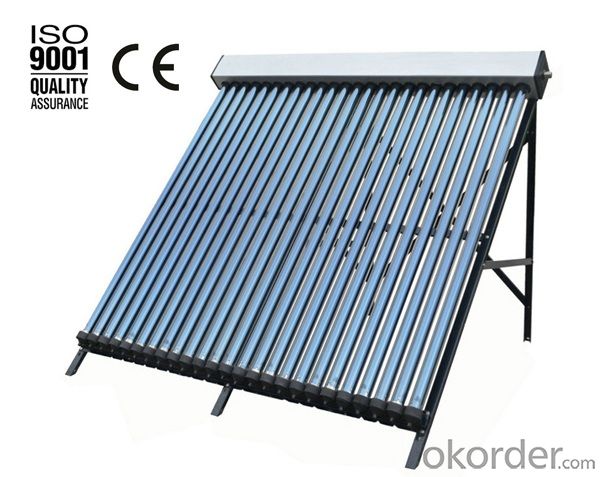
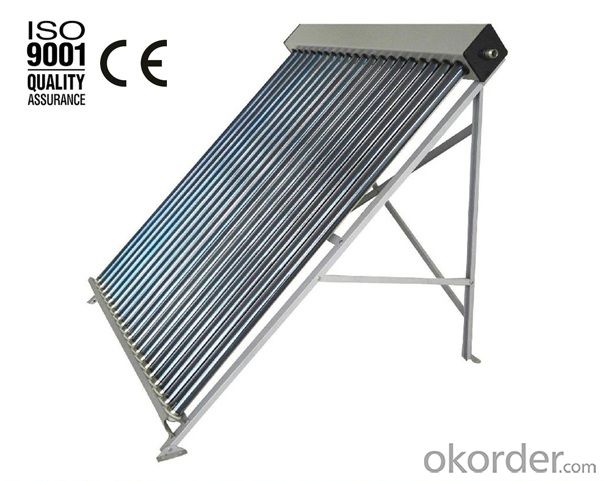
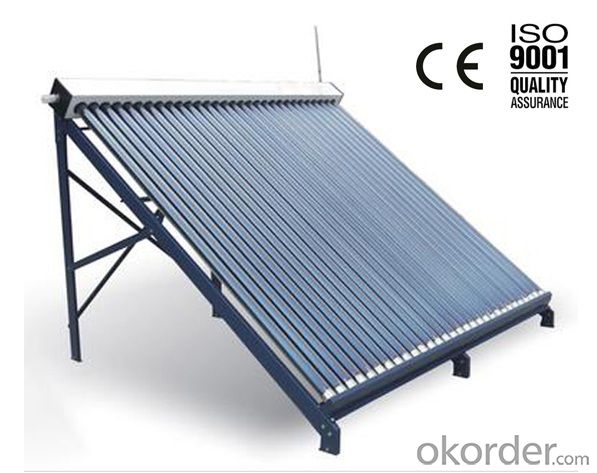
FAQ
1. Q: Are you a factory or trading company?
A: We are a factory. Especially for Solar Controller, PWM solar controller 50A12V/24V
2. Q: Where is your factory located? How can I visit there?
A: Our factory is located in Guangzhou, China. You are warmly welcomed to visit us!
3. Q: what other product you have except such Solar Lighting?
A: We have poly ,mono cells and panels. Off grid solar system, like off grid solar inverter, pure sine wave inverter, solar collector, solar controller, solar charger, Portal solar system, battery, DC Fan, Solar Led Light.
4. Q: Can the price be cheaper?
A: Of course, you will be offered a good discount for big amount.
5. How can I get a sample?
A: Please call us or send email for asking the samples.
- Q: Can a solar water heater be used in areas with high levels of mineral content in the water?
- Yes, a solar water heater can be used in areas with high levels of mineral content in the water. However, the mineral content may pose some challenges as it can lead to scaling and build-up in the system, reducing its efficiency over time. Regular maintenance and periodic descaling are necessary to ensure optimal performance and longevity of the solar water heater in such areas.
- Q: Can a solar water heater be used in areas with limited access to renewable energy incentives?
- Yes, a solar water heater can still be used in areas with limited access to renewable energy incentives. While incentives can certainly make the installation and maintenance of solar water heaters more affordable, the main advantage of solar water heating is its ability to harness energy from the sun, which is available regardless of incentives. In areas with limited access to renewable energy incentives, the upfront cost may be higher, but the long-term savings on energy bills can still make solar water heaters a cost-effective choice. Additionally, using solar energy for water heating can reduce reliance on traditional energy sources and contribute to a cleaner and more sustainable environment.
- Q: Three homes to install solar water heaters, 58mm vacuum tube that the minimum number of roots, the length of the right? What is the capacity of the tank? In addition to the purchase of materials also need to pay attention to what?
- I'll give you a professional analysis. I'm a solar water heater.1 vacuum collector tube. Be sure to choose the three high purple tube. Don't be an ordinary three executive. Collector effect gap,2 water tank insulation layer, the uniformity is better. Looking more uniform,. Slightly thicker. Relatively good insulation performance
- Q: Can a solar water heater be used for industrial applications?
- Yes, a solar water heater can be used for industrial applications. It can provide hot water for various industrial processes such as cleaning, sterilization, and heating. However, the size and capacity of the solar water heater would need to be appropriately designed to meet the specific requirements of the industrial application.
- Q: There are several kinds of solar water heater
- The types of solar water heater solar water heater can be divided into the following categories:
- Q: How does the installation process of a solar water heater compare to a traditional water heating system?
- The installation process of a solar water heater differs from a traditional water heating system in a few key ways. While both systems require some level of expertise and professional installation, a solar water heater requires additional components such as solar panels and a solar collector. These components need to be properly positioned and connected to the existing plumbing system. In contrast, a traditional water heating system typically involves the installation of a traditional water heater unit that is connected to the plumbing system. Overall, the installation process of a solar water heater may be slightly more complex due to the integration of solar components, but it offers the benefit of harnessing renewable energy and reducing reliance on traditional energy sources.
- Q: Can a solar water heater be used in areas with limited access to after-sales support?
- Yes, a solar water heater can be used in areas with limited access to after-sales support. Solar water heaters are relatively simple systems that require minimal maintenance and have few moving parts. As long as the initial installation is done correctly and the system is properly maintained, it can provide reliable hot water without much need for after-sales support. Additionally, there are many online resources available to troubleshoot and address any potential issues that may arise.
- Q: Are solar water heaters suitable for commercial use?
- Yes, solar water heaters are suitable for commercial use as they can effectively meet the hot water demands of various commercial establishments such as hotels, restaurants, hospitals, and office buildings. They offer significant cost savings on energy bills and reduce reliance on traditional heating methods, making them an environmentally friendly and sustainable option. Additionally, solar water heaters can be easily integrated into existing plumbing systems, making them a practical choice for commercial applications.
- Q: Solar water heater without the sun how to do?
- Solar water heaters do not have to worry about the sun:1, there is no sun weather, the water in the water heater is not heated, naturally not hot, but, if one day the water has not run out, it depends on the function of water tank insulation, good insulation, high temperature. On the other side. Such as Zhejiang in the winter is very cold, but the sun, three or four hours after the sun, the water temperature is also fifty or sixty degrees, is to rely on the preservation of the water tank.
- Q: Can a solar water heater be used in areas with water scarcity?
- Yes, a solar water heater can be used in areas with water scarcity. Solar water heaters use the energy from the sun to heat water, reducing the reliance on traditional water sources. This makes them a suitable and sustainable option for areas where water scarcity is a concern, as they can help conserve water resources while still providing hot water for various needs.
Send your message to us
Htp Solar Water Heater - Stainless Steel Solar Water Heaters Cheap Price
- Loading Port:
- China main port
- Payment Terms:
- TT OR LC
- Min Order Qty:
- 10 set
- Supply Capability:
- 1000 set/month
OKorder Service Pledge
OKorder Financial Service
Similar products
Hot products
Hot Searches
Related keywords
